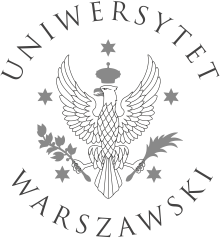Seminarium Fizyki Ciała Stałego
sala 0.06, ul. Pasteura 5
prof. Carmine Autieri (International Centre for Interfacing Magnetism and Superconductivity with Topological Matter - MagTop, Institute of Physics, Polish Academy of Sciences)
"Relativistic spin-momentum locking in altermagnets"
Spin-momentum locking has been demonstrated to exist in altermagnets in the non-relativistic limit [1]. When spin-orbit coupling is taken into account, all altermagnets display antisymmetric exchange interactions. These interactions lead to spin canting, although the canting may vanish for certain orientations of the N´eel vector. We demonstrate that when spin-canting occurs, the spin-momentum locking can evolve and change significantly. Focusing on the centrosymmetric altermagnets, we will show that the spin-momentum locking can be present and differs for all three components of the spin Sx, Sy and Sz. The combination of the three spin-momentum lockings is named relativistic spin-momentum locking. To discuss this effect, we consider two prototypical centrosymmetric altermagnets, namely the orthorhombic YVO3 and the hexagonal MnTe, which have bulk d-wave and bulk g-wave spin-momentum locking in the non-relativistic limit. For the G-type magnetic ordering of YVO3 and N´eel vector along the z-axis, the relativistic spin-momentum locking is composed of s-wave, dxy-wave and dxz-wave for the Sx, Sy and Sz components, respectively. As in the non-relativistic case, the relativistic spin-momentum locking is protected by rotational symmetries. In MnTe, the main component Sy of MnTe inherits the polarized charge distribution and the non-relativistic spin-momentum locking bulk g-wave, but the breaking of the C6z rotational symmetry by the N´eel vector lowers the symmetry from g-wave to d-wave. The relativistic spin-momentum locking for MnTe is composed of dxz -wave, dyz -wave and s-wave for the Sx, Sy and Sz components, respectively [2,3]. There are several orders of magnitude of difference between the size of the main spin component and the components raised by the canting. Despite this, the spectral weight of the canted components on the spin-resolved band structure is significant. Indeed, the spectral weight of the canted components is smaller but of the same order of magnitude as that of the main spin component. Finally, we address the challenges arising in noncentrosymmetric altermagnets [4]. [1] L. Smejkal, J. Sinova, and T. Jungwirth, Phys. Rev. X 12, 031042 (2022). [2] C. Autieri and A. Fakhredine. Submitted. [3] R. Hirakida et al. https://arxiv.org/abs/2509.20120 [4] A. Fakhredine, C. Autieri et al. In manuscript.






